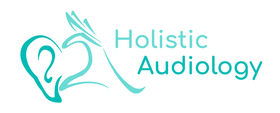
Earwax build-up can be a common problem for many. Earwax cleaning traditionally done by GPs are now offered much more widely by a range of professionals. Increased choice of providers brings greater accessibility to services, but also greater confusion to clients as to what is the most appropriate service.
Being informed before you embark on professional earwax removal is well worth it.
MYTH 1: EARWAX IS DIRTY AND MUST BE COMPLETELY REMOVED.
Earwax production is a healthy function of your ear. It is a helpful par of your body’s natural defences to protect against foreign objects, such as dust and insects. Earwax has anti-fungal and anti-bacterial properties and reduces the risk of ear infections. Having some residual earwax in the ears is actually beneficial.
MYTH 2: MICROSUCTION IS THE BEST AND SAFEST EARWAX REMOVAL METHOD FOR ALL.
Microsuction can be a safe and effective earwax removal method, especially for removal of deep-seated earwax or debris. However, as per all medical procedures it also carries risks and possible complications. Common complaints post microsuctioning may include vertigo, temporary reduction in hearing and/or experience of tinnitus. Microsuctioning also requires the client to keep their head still at all times during the procedure, hence it is not recommended for younger children or those with certain neurological symptoms.
MYTH 3: SYRINGING OF EARWAX CAUSES EAR INFECTIONS AND MUST NOT BE USED.
Syringing uses water to help remove earwax. It is reportedly the most effective method in cases of significant earwax blockage. Syringing is the most common practice among GPs. The risk of infection relates to the presence of retained water in the ear and can lead to complications. Properly trained and accredited earwax removal professionals need to ensure that irrigated ears are dried at the completion of the procedure if syringing is necessary. A possible alternative to syringing is mechanical removal (curettage).
MYTH 4: CLEAN YOUR EARS TO MANAGE EARWAX BUILD-UP.
Should you clean your ears? The simple answer is “no”. Your ears have a natural self-cleaning mechanism. The cells in your ear canals slowly shuffle outwards like a conveyor belt, moving earwax and other dirt out of the ear canal. If you produce excessive wax or dry wax, you can use earwax drops to help manage it to some extent. Earwax drops are only to be used (as per manufacturer’s instructions) if you have healthy normal eardrums and ear canals, that is, you do not suffer from any ear pathologies.
MYTH 5: OLIVE OIL HELPS DISPERSE EARWAX.
Olive oil is commonly recommended to manage earwax. Unfortunately, studies have shown that use of olive oil does not disperse earwax. On the contrary, routine use of olive oil may even exacerbate the amount of blockage in the ear canals.
At Holistic Audiology, our audiologist has received accreditation to perform earwax removal by the recognised Ear Health course provider. Feel free to consult us regarding your earwax and/or ear health needs.
Experience Holistic Audiology
REFERENCES:
Chalishazar, Urmil & Williams, Huw. (2007). Back to basics: finding an optimal cerumenolytic (earwax solvent). British Journal of Nursing. 16. 806-8. https://doi.org/10.12968/bjon.2007.16.13.24247
Kamien, M. (1999). Practice tip. Which cerumenolytic? Australian Family Physician. 28(8):817, 828. https://pubmed.ncbi.nlm.nih.gov/10495532/
Prowse, S.J. & Milla, O. (2014). Aural microsuction for wax impaction: Survey of efficacy and patient perception. Journal of Laryngology and Otology. 128:621–25. Retrieved from https://www.racgp.org.au/afp/2015/october/ear-wax-management
Rodgers, M. (2013). Does olive oil prevent earwax build-up? An experimental study. Practice Nursing 24(4):191-196. Retrieved from https://www.magonlinelibrary.com/doi/abs/10.12968/pnur.2013.24.4.191
Saxby, C., Williams, R., Hickey, S. (2013). Finding the most effective cerumenolytic. The Journal of laryngology and otology. 127. 1-4. doi: 10.1017/S0022215113002375. Retrieved from https://www.cambridge.org/core/journals/journal-of-laryngology-and-otology/article/abs/finding-the-most-effective-cerumenolytic/94EA5C9F4BCF30FCFE3F43470A6B102E
Shope, T.R., Chen, C.P., Liu, H., Shaikh, N. (2019). Randomised Trial of Irrigation and Curetting for Cerumen Removal in Young Children. Frontiers in Pediatrics. 7:216. https://doi.org/10.3389/fped.2019.00216
Snelling, J.D., Smithard, A., Waddell, A. (2009). Noise levels generated within the external auditory canal during microsuction aural toilet and the effect on hearing: A prospective controlled series. Clinical Otolaryngology. 34:21–25. https://doi.org/10.1111/j.1749-4486.2008.01841.x
